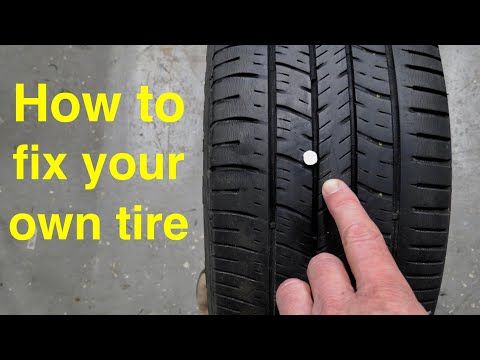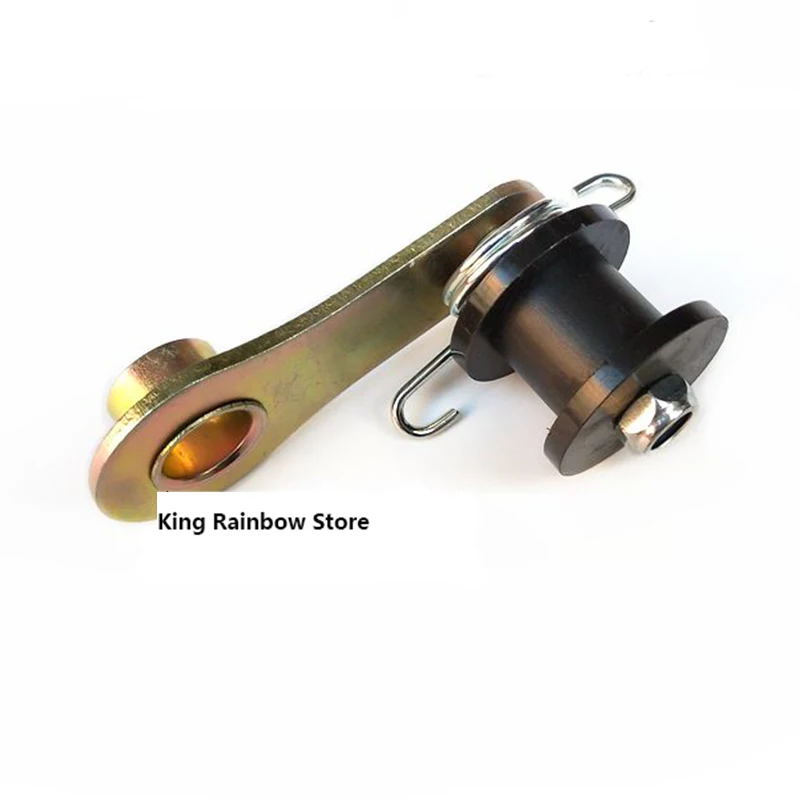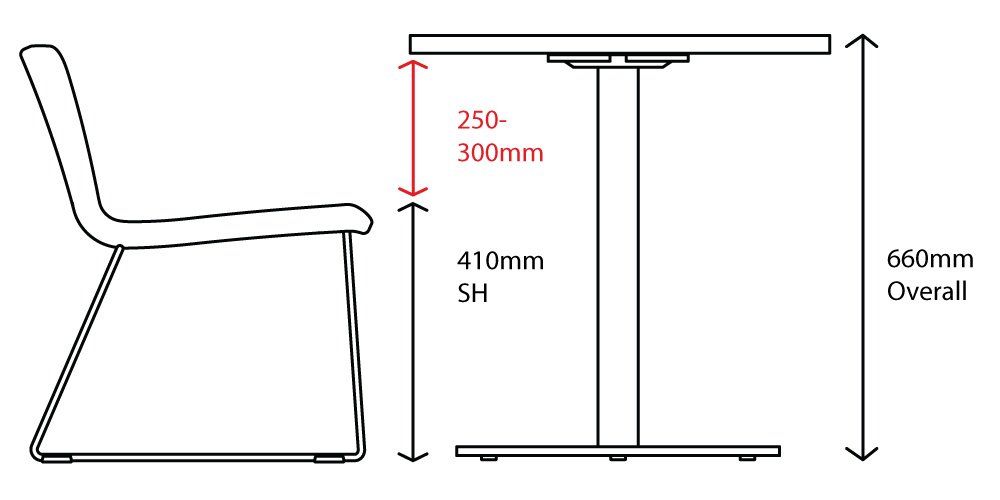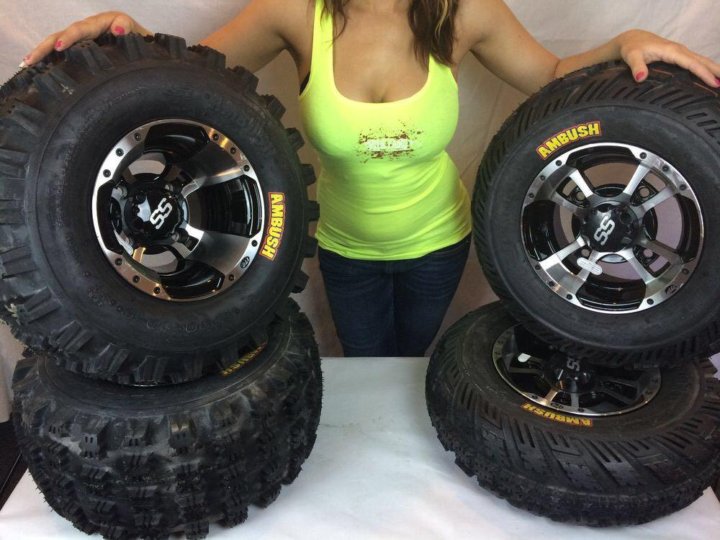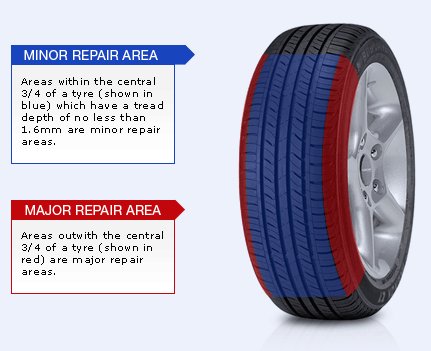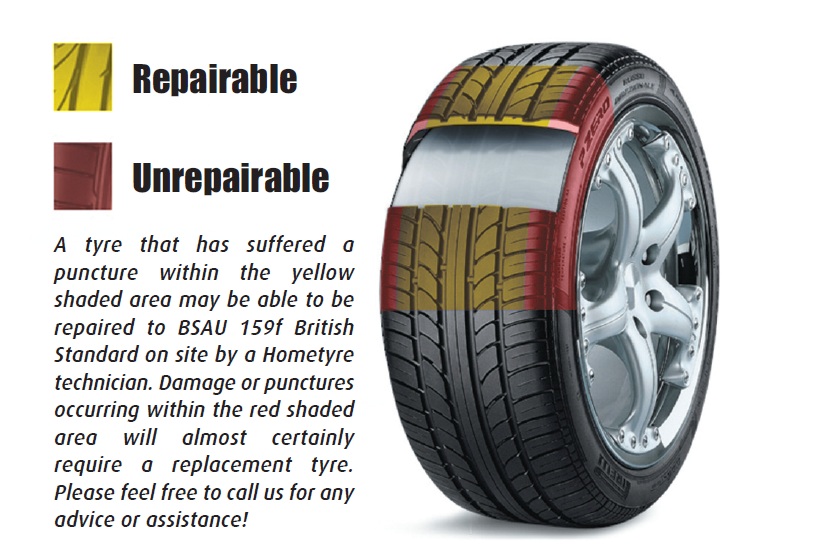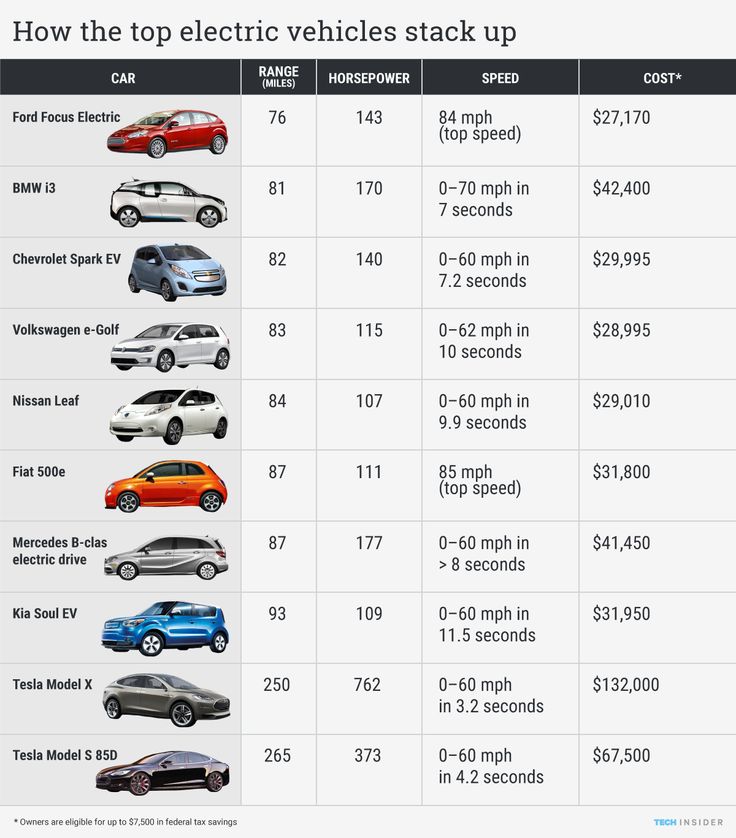We may earn revenue from the products available on this page and participate in affiliate programs.
Photo: Tom Scalisi
Most drivers have looked down at their dashboard and noticed a warning light indicating a tire with low pressure. If you drive for a minute or so and the light stays on, it’s time to take action and check your tires. You can either pay for air at the gas station pump or grab your trusty tire inflator and handle the problem yourself.
Whether it’s battery-operated, 110-volt electric, or one that plugs into your car’s 12-volt system, the right tire inflator is just the ticket when you’re in a pinch. In no time at all, these noisy day-savers can boost a low tire to optimal pressure.
Choosing the best tire inflator for your needs helps keep your vehicle running at its best. From poor gas mileage to terrible ride quality, tires low on pressure can make driving problematic. Instead, arm yourself with one of the best tire inflators from this guide.
Photo: Tom Scalisi
How We Tested the Best Tire InflatorsTo ensure that I recommend the best tire inflator possible, I put the models on this list to the test. I used a truck tire, a bicycle tire, and a basketball as my test subjects.
For the bicycle tire, I deflated the tire as much as possible between filling and pumped it back up with the compressor. I checked to see how easy each model was to connect to a finicky, loose bicycle stem, and to ensure it was easy to control while inflating.
I checked to see how easy each model was to connect to a finicky, loose bicycle stem, and to ensure it was easy to control while inflating.
For the basketball, I inserted the filler needle into the ball and deflated it using my bodyweight between each test. I then attached each compressor to see how it would do.
The final test was pumping up a low vehicle tire. Even though many of these models aren’t rated for truck tires, I don’t own a car, so truck tires had to do. I deflated the tire from 41 PSI to 30 PSI, using the vehicle’s tire pressure monitoring system as a reference. Once the pressure was low enough, I connected a tire inflator and timed how long it took to pump the tire up. This gave me an excellent idea of the power and battery life these inflators could offer.
Our Top PicksWith that background on what to look for when shopping for one of the best tire inflators for your needs, it’s time to start comparing the top products. This section is a compilation of some of the best tire inflators on the market.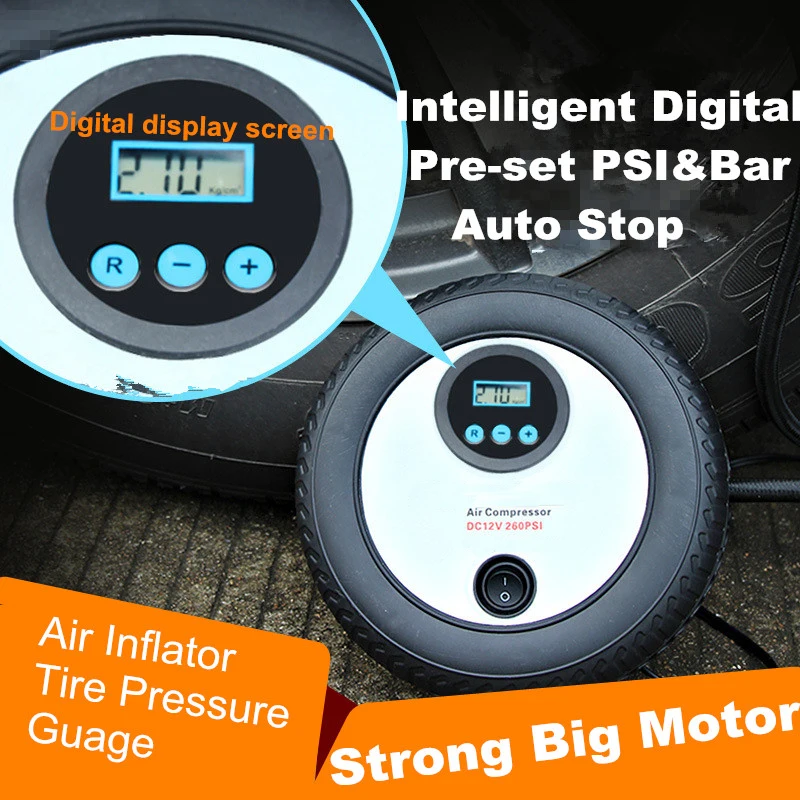 This list considers the factors listed above, from convenience and portability to pressure and power source. In fact, I tested each of the following inflators to ensure they’re up to snuff.
This list considers the factors listed above, from convenience and portability to pressure and power source. In fact, I tested each of the following inflators to ensure they’re up to snuff.
Photo: amazon.com
SEE IT
The Makita MP100DZ 12V Max CXT Cordless Inflator is a battery-operated model that can pump up to 120 PSI of pressure into a car, bike, or tractor tire. It’s compact and lightweight, so there’s no need to lug a large, unwieldy compressor to the tire. The high-visibility pressure gauge shows exactly how much air pressure is in the tire. By presetting the MP100DZ, it even turns off automatically when the tire reaches the desired PSI.
I found that there was a lot to like about this Makita tire inflator during testing. It had plenty of power (filling the fastest of all the inflators in the group) while being compact and comfortable to hold during inflation. The pressure was easy to set, and the gauge was accurate to within 1 PSI of the vehicle’s tire pressure monitor.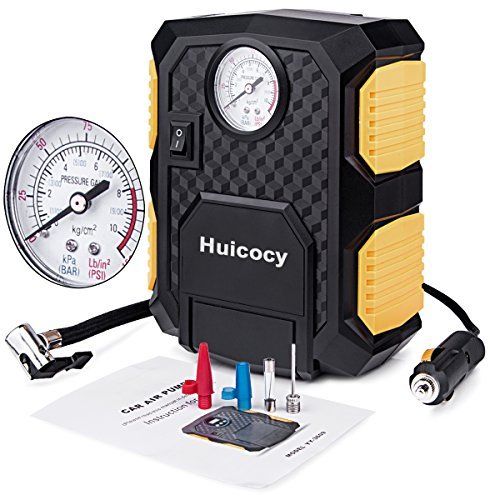
Product Specs
Pros
Cons
Get the Makita MP100DZ tire inflator at Amazon or The Home Depot.
Photo: amazon.com
SEE IT
The Ryobi P737D is an affordable battery-operated tire inflator that is simple and straightforward, yet it can boost a tire up to 150 PSI. Its pistol-grip design is ergonomic and comfortable to use, and it houses two additional needles for blowing up pool toys and athletic balls. It features a 20-inch snap-on hose for standard tire valves and weighs just 2.5 pounds.
Originally, the P737D featured an analog gauge, which Ryobi has upgraded to a digital gauge, and it’s a welcome addition. I did feel like the Ryobi was a little bulky in hand during testing, but it was more than up to the task of filling anything, including truck tires. With the battery attached, it’s actually a little heavier than most other models, but it has a better battery life and plenty of power.
I did feel like the Ryobi was a little bulky in hand during testing, but it was more than up to the task of filling anything, including truck tires. With the battery attached, it’s actually a little heavier than most other models, but it has a better battery life and plenty of power.
Product Specs
Pros
Cons
Get the Ryobi P737D tire inflator at Amazon or The Home Depot.
Photo: lowes.com
SEE IT
For a high-quality tire inflator that provides plenty of power options, the Craftsman V20 CMC3520B inflator is worth a look. This inflator runs on 110V or 12V power and comes with a 4-Ah battery to ensure strong inflation power.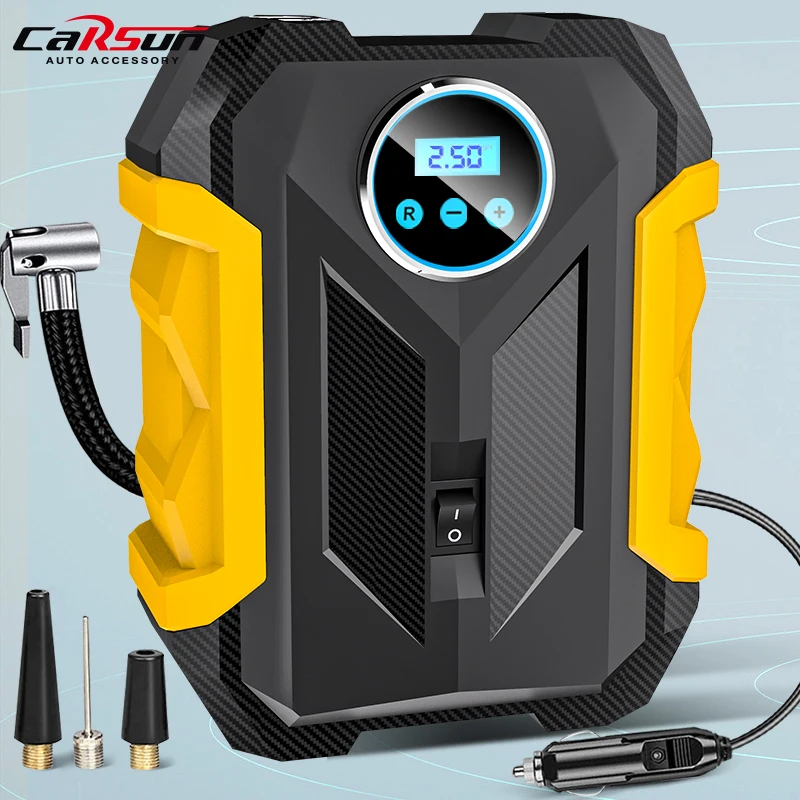 It also includes a 20-inch hose, a digital pressure gauge with a regulator, and onboard cord and hose storage. The CMCE520B has a maximum pressure of 160 PSI, providing plenty of pressure for filling car and truck tires. Once it reaches the desired pressure, this inflator’s automatic shutoff will turn the compressor off, eliminating the risk of over-inflating your tires.
It also includes a 20-inch hose, a digital pressure gauge with a regulator, and onboard cord and hose storage. The CMCE520B has a maximum pressure of 160 PSI, providing plenty of pressure for filling car and truck tires. Once it reaches the desired pressure, this inflator’s automatic shutoff will turn the compressor off, eliminating the risk of over-inflating your tires.
Testing proved that the Craftsman is a quality compressor, and the increased pressure over other models is really a standout feature. I liked that all the storage was on board for the different valve attachments, both AC and DC wires, as well as the flexible hose for floats and air mattresses. I also liked that it sits securely on the ground while filling, which is especially nice when coupled with the automatic shut-off. It also filled to within 1 PSI of the vehicle’s TPMS reading, which I felt was very accurate.
Product Specs
Pros
Cons
Get the CRAFTSMAN V20 tire inflator on Amazon.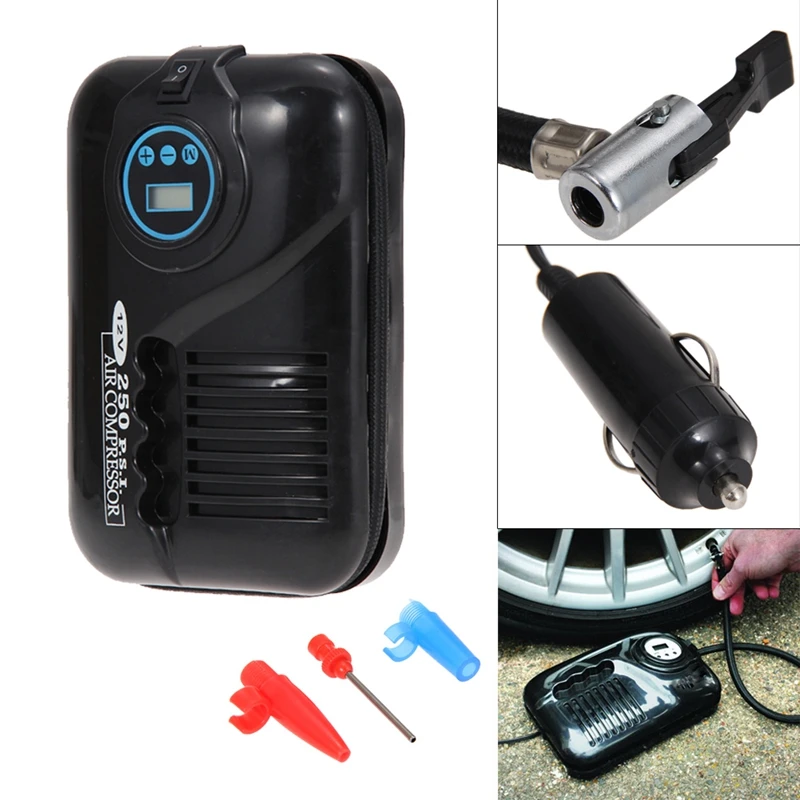
Photo: walmart.com
SEE IT
Should a tire lose pressure at a mall parking lot or campsite, for example, there may not be power readily available for a compressor. The AstroAI tire inflator is powered by a car’s 12-volt battery system. Plug it into the car’s 12V jack and turn on the car’s accessory mode for the power required to take care of a low tire—at least enough to drive it to a tire shop for repair. Plus, it features an LED flashlight for better visibility. This relatively small pump will fit in almost any trunk and comes with adapters for pool floats and sports balls. It also comes with an easy-to-read backlit pressure gauge.
The AstroAI portable air compressor is really well designed. I like that it looks and operates just like a miniature commercial horizontal compressor. The digital gauge on top was by far the best in the group, as well. It did take a while to pump up a truck tire, but the reading was spot on with the vehicle’s TPMS system, and it was the quietest running in the group, thanks to the rubber feet.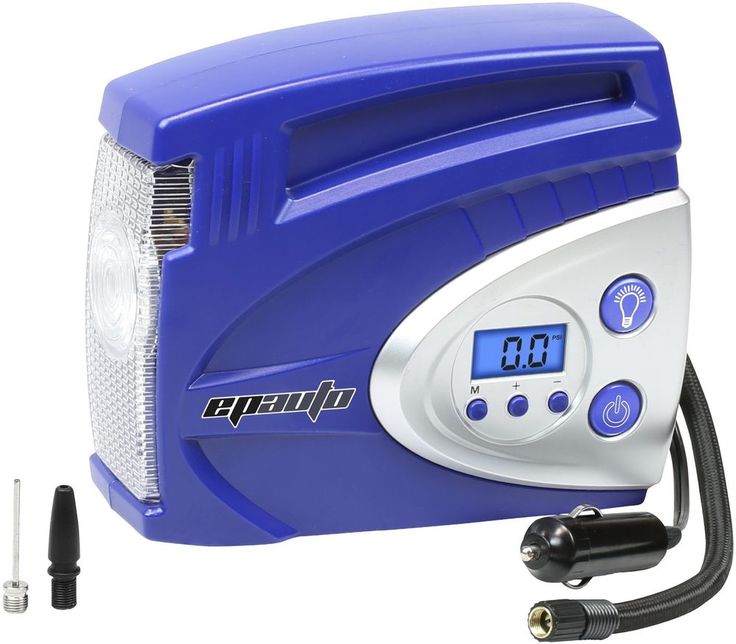
Product Specs
Pros
Cons
Get the AstroAI portable air compressor pump on Amazon.
Photo: amazon.com
SEE IT
Car owners who already own an air compressor don’t need one of the tire inflators on this list. Instead, they can just use this tire inflator accessory from AstroAI. This valve unit comes with a threaded brass fitting and a comfortable squeeze trigger, plus an easy-to-read backlit digital gauge. The digital gauge turns on automatically when it senses pressure and shuts off after 20 seconds. This valve can handle up to 250 PSI, enough to fill most tires.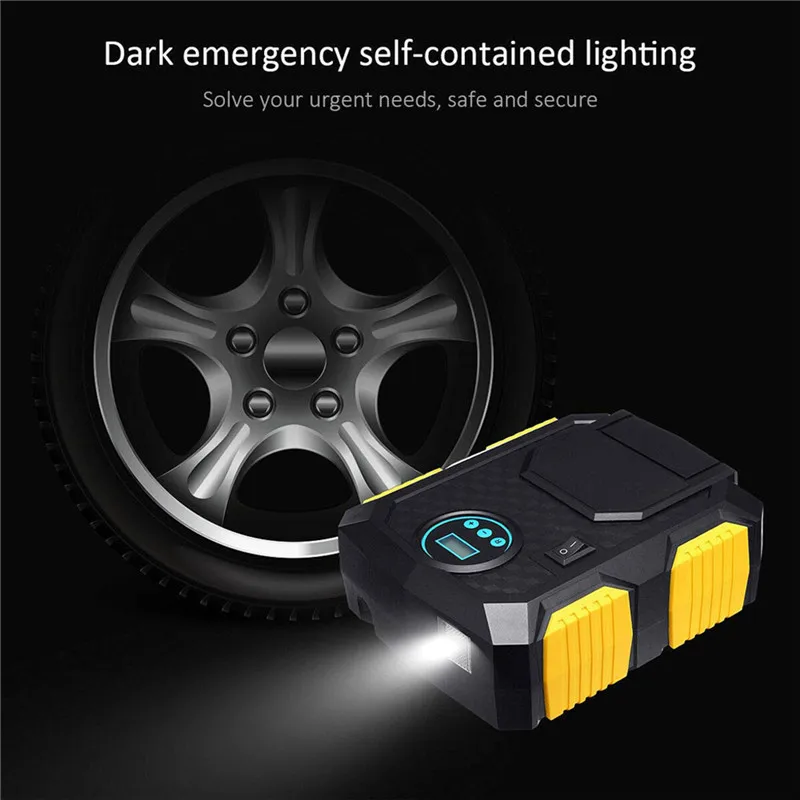 It comes with a 1/4-inch quick-connect fitting that easily snaps onto most air hoses.
It comes with a 1/4-inch quick-connect fitting that easily snaps onto most air hoses.
I really enjoyed using this AstroAI tire inflator with my compressor, as the gauge was easy to read and very responsive once I let go of the trigger to check the pressure. I did have to wiggle the connection between the tire valve and this inflator a few times, which may be a bit of a downside to some. Overall, it filled very quickly and accurately when hooked to my heavy-duty air compressor. For light-duty compressors, however, it might not fill as quickly.
Product Specs
Pros
Cons
Get the AstroAI Digital tire inflator on Amazon.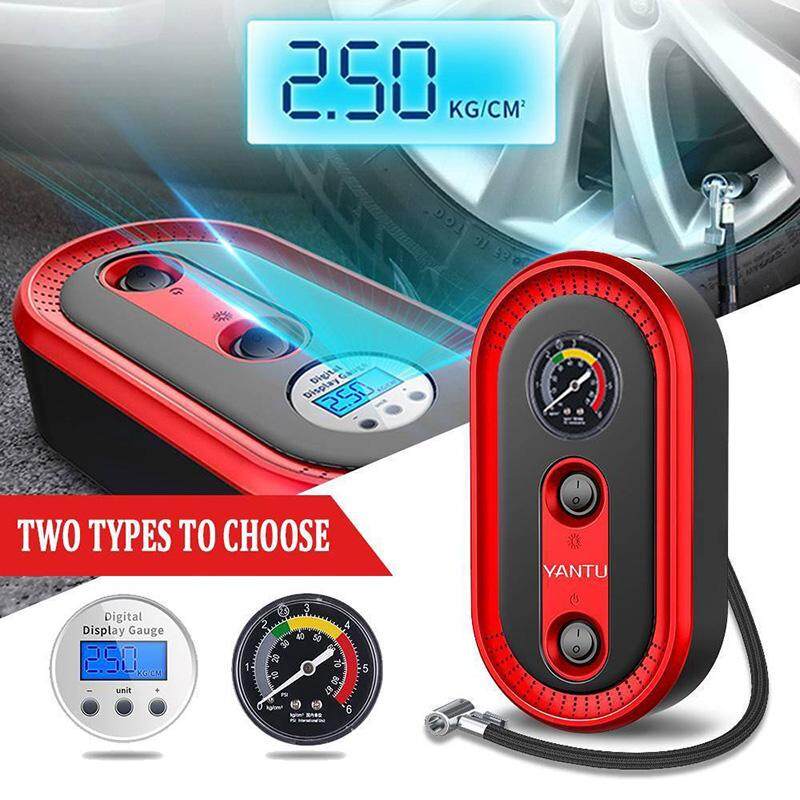
Photo: walmart.com
SEE IT
Flexibility matters, and the Kensun air compressor is a portable air compressor and tire inflator that works with 12V power from a vehicle and 110V power from a home. With this kit, homeowners get a needle for sports balls and an adapter for blowing up pool floats and other inflatables. It has a maximum pressure of 120 PSI and will work for 30 minutes before shutting off automatically.
One of the best features that I found in the Kensun Portable Air Compressor is that it’s incredibly simple to operate. There are only two buttons, one for each power source. Beyond that, it was effective and powerful enough to fill a truck tire, and had no problem with the bike tires or basketball. The gauge isn’t incredibly accurate or easy to read, and I did have to sit by it to make sure it didn’t overinflate the tire as there are no settings for auto shut-off.
Product Specs
Pros
Cons
Get the Kensun portable air compressor pump on Amazon.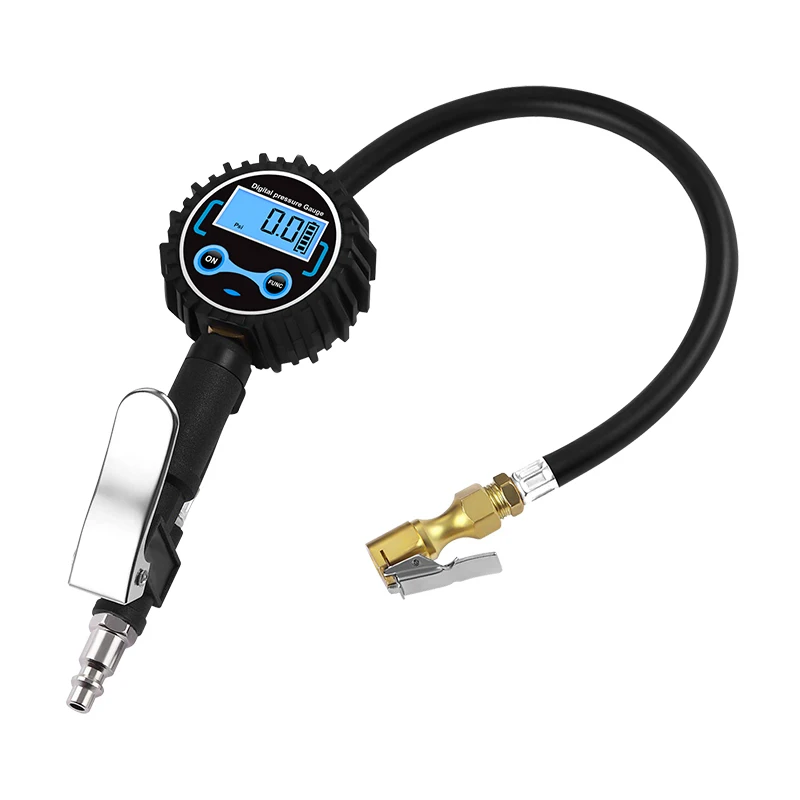
Photo: amazon.com
SEE IT
For a tire inflator that fits easily in a glove box or backpack, this mini inflator from Cycplus is a good choice. This tiny pump is only about 7 inches long but produces up to 150 PSI of pressure to inflate car tires, motorcycle tires, or sports equipment. It also has a built-in LED flashlight and a digital pressure gauge. It charges completely in two-and-a-half hours, and functions as a portable power bank for charging cell phones and other electronics. It also features convenient onboard storage for the air tube and other accessories.
Incredibly, this mini inflator was the big surprise in the group. It’s not rated for a truck tire, but because I don’t own a car, a truck tire had to do. It handled the job. It did get hot, and the battery was only capable of filling one tire after filling the basketball and bike tires, but it did the trick. It’s so small that it fits in a glove box, but it’s powerful enough to get a low tire up to snuff.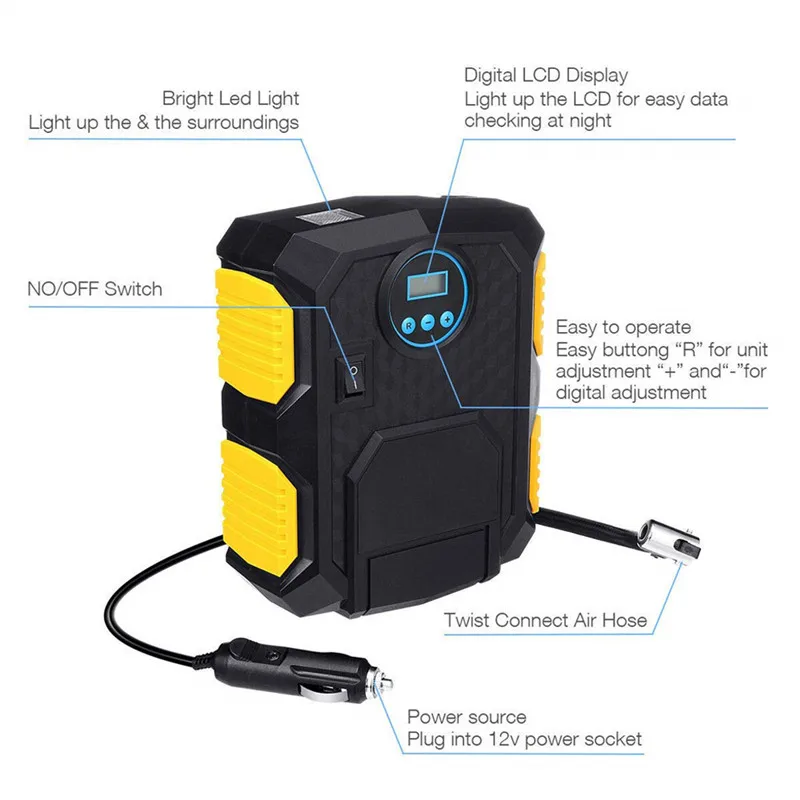 I don’t think I’d use it to fill several tires, but it’s great in a pinch.
I don’t think I’d use it to fill several tires, but it’s great in a pinch.
Product Specs
Pros
Cons
Get the CYCPLUS portable tire inflator on Amazon.
What to Consider When Choosing the Best Tire InflatorBefore comparing products, it’s helpful to have a little background. This section will cover the key considerations to keep in mind when looking for a tire inflator. From power source to readability, pay attention to these factors when making your choice.
Power SourceTire inflators use electric motors and pumps to fill your tire. They need a power source to do that, and there are two options: corded and cordless.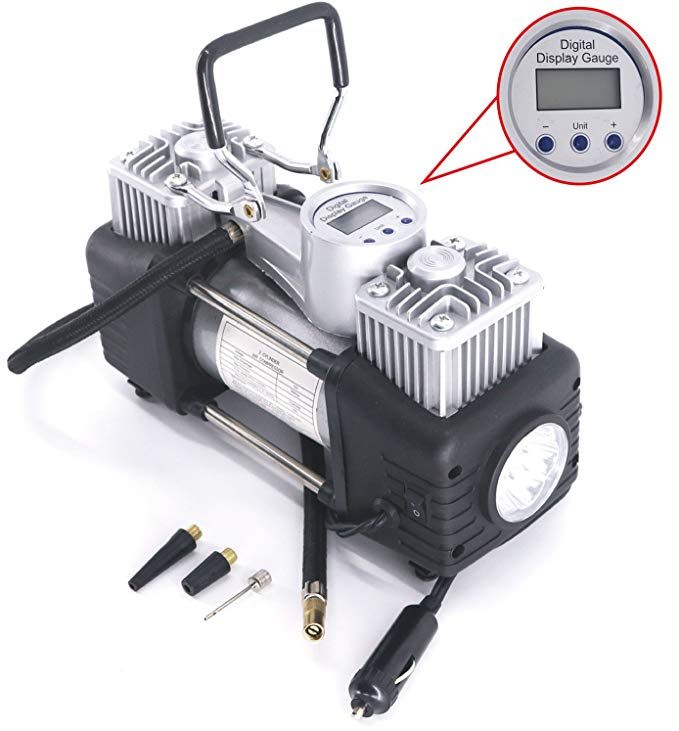
Corded inflators that use 12V power plug into your vehicle’s 12V jack to run off the car’s battery. Some may clip directly to the battery, like jumper cables. These inflators are convenient because they don’t require keeping an additional battery charged. As long as the car’s battery has power, the inflator can operate.
While most corded inflators run on 12V power, there are flexible models that use both 12V and 110V power. These models plug into a standard electrical outlet as well as 12V jacks.
Cordless inflators are battery operated and use rechargeable batteries to power the motor and pump. Some cordless inflators have built-in batteries that charge via USB or 110V power, while others have removable batteries.
Cordless inflators offer quite a bit more flexibility than a corded 12V inflator, as they don’t require an additional power source to fill a tire. For this reason, they’re just as good at filling bike tires and sports equipment as they are at pumping pressure into car tires.
When it comes to tire inflators, pressure usually equals speed. The higher the pressure a tire inflator can produce, the quicker it can fill a tire. In order to avoid spending too much time filling a tire, look for a compressor with at least 100 PSI. However, an inflator with a maximum pressure of 150 PSI will have it up and running even faster. Most tire inflators can fill your car’s tire to the recommended 30 to 40 PSI without an issue.
Inflation TimeWhen choosing a tire inflator, the amount of time it takes to pump up a tire can be a significant factor. Inflation time can run from around 10 minutes to up to 20 or 30 minutes, depending on the tire inflator and its output. The less time spent filling a tire, the sooner the vehicle or bike can get on the road.
Duty CycleAir compressors operate on what’s known as a “duty cycle.” The duty cycle describes how long a compressor can run before needing a certain amount of time to cool down.
Many tire inflators can only run for 15 minutes or so before needing a break. They have to run at high speeds to produce the amount of pressure necessary, and compressing air creates heat. Also, their compact design causes them to retain that heat, so they’re not able to run as long as a pancake or full-size compressor. These larger compressors are able to fill a tank with air and then shut off, making duty cycle less of a consideration (except in commercial settings).
Shorter duty cycles are rarely an issue when filling pool floats or sports equipment, but it can be a drawback when filling large truck tires. For that reason, many portable tire inflators clearly state they’re not designed for truck tires, though anything will help in a pinch.
Gauge ReadabilityTo get the most wear and mileage out of car tires, fill them with the optimal amount of pressure that the manufacturer recommends. This is usually around 35 PSI.
To put the proper amount of air into the tire, a tire inflator needs a gauge that’s easy to read.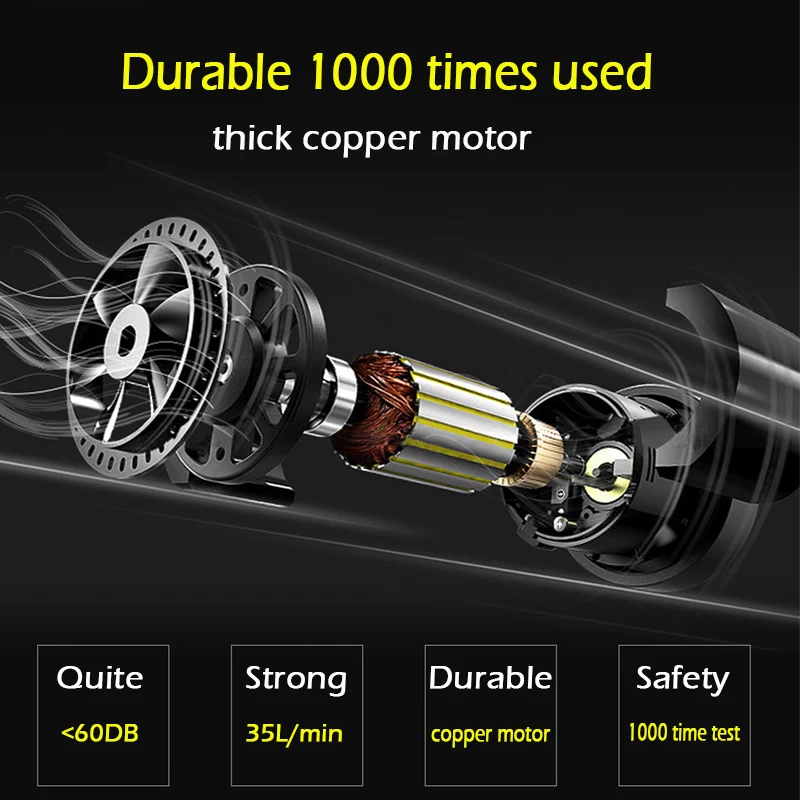 Inflators with digital gauges are the easiest, especially if they have a light in the background or backlit. However, analog gauges also work well if their faces have large numerals. Most analog gauges don’t have a backlight, though, so they can be challenging to read in low-light situations.
Inflators with digital gauges are the easiest, especially if they have a light in the background or backlit. However, analog gauges also work well if their faces have large numerals. Most analog gauges don’t have a backlight, though, so they can be challenging to read in low-light situations.
Small air compressors are stout, tough machines, but they can overheat if they run too long. Manufacturers protect their tire inflators by including built-in automatic shut-off functions.
The three measurements that a tire inflator can take before shutting off automatically are pressure, temperature, and time. A pressure shutoff is particularly handy, as it can be set to the desired pressure, and the inflator will stop pumping air once the tire reaches it. Likewise, if the tire inflator starts reaching a dangerous temperature, typically around 200 degrees Fahrenheit, it will shut down until it cools off. A built-in shutoff could also begin a cooldown process after running for a prescribed amount of time, usually around 15 minutes.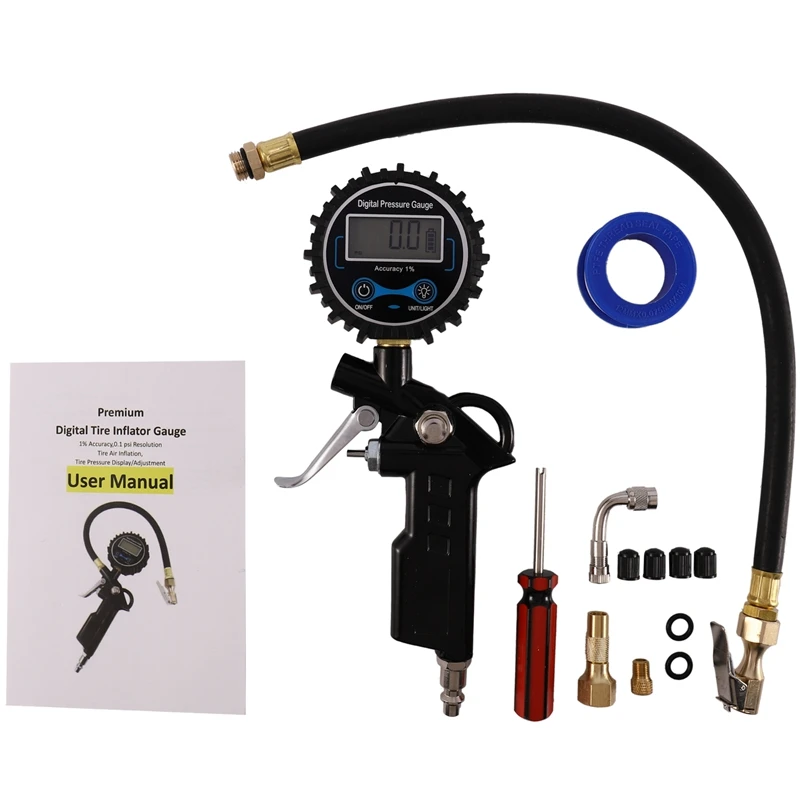
Trying to fill a tire with a short hose isn’t much fun, but tripping over a long, tangled hose isn’t much better. A tire inflator with a 16- to 20-inch hose generally works best—long enough to easily reach most tires but still manageable.
For a longer hose that’s also manageable, look for a tire inflator with a coiled hose. These hoses stretch considerably, often enough to fill each of the four tires without moving the compressor. These inflators can be very helpful for off-road enthusiasts and large vehicles like pickup trucks and SUVs.
Weight and PortabilityPeople often look for a tire inflator over a standard air compressor because they’re light and portable—and that’s an excellent reason. A tire inflator can often weigh less than a pound, so you can carry it in one hand.
When heading out on a road trip, a tire inflator can be a handy tool, though trunk space can get tight on a longer trip. A compact inflator can fit nicely in the trunk without taking up valuable space needed for luggage or snacks.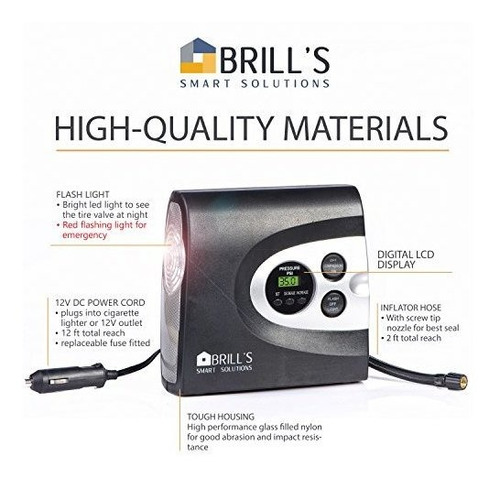 Most tire inflators fit this bill, but compact models take up even less space.
Most tire inflators fit this bill, but compact models take up even less space.
If the tire pressure warning light pops on, indicating some lost pressure overnight, the fix needs to be fast and straightforward. This requires a tire inflator that’s easy to use.
While tire inflators are often simple by design, there are a few features that can make using them even easier. For example, a programmable pressure regulator will prevent overfilling the tire. Another handy feature is a built-in pressure gauge. This shows how much pressure is going into the tire without having to remove the hose to check it with a separate tire gauge.
How to Use a Tire Inflator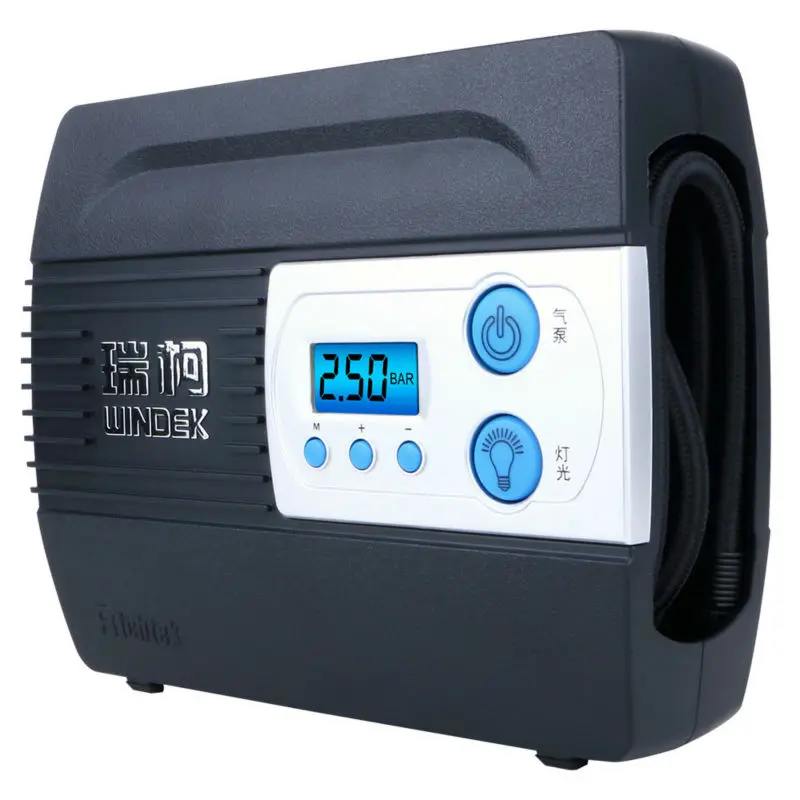 Filling a tire within this range leads to even tread wear, a comfortable ride, and better gas mileage.
Filling a tire within this range leads to even tread wear, a comfortable ride, and better gas mileage.If you still have some questions about your new tire inflator, don’t worry. This section answers the most frequently asked questions about tire inflators.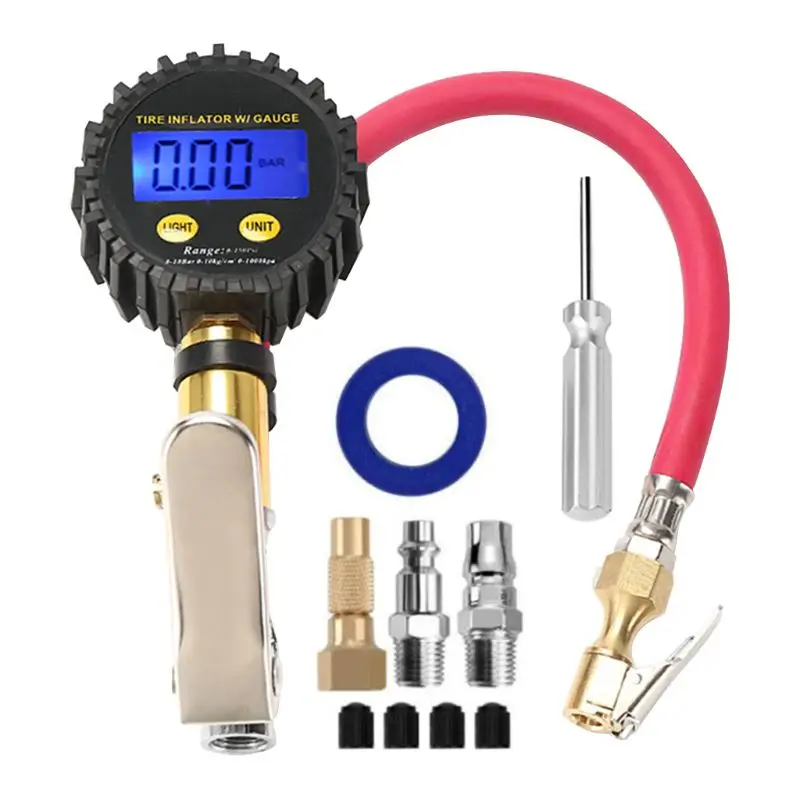 If you still have questions after reading through it, you can contact your tire inflator manufacturer’s customer service department.
If you still have questions after reading through it, you can contact your tire inflator manufacturer’s customer service department.
Proper tire pressure helps maintain even tread wear on vehicle tires, allowing for the longest possible life out of a tire set. Proper pressure also improves gas mileage.
Q. How do I check tire pressure?The easiest way to check the tire pressure is with a pressure gauge (available on Amazon). Just remove the valve cap and press the gauge onto the tire’s valve to get a reading.
Q. How do I find the recommended PSI for my tires?This value is usually available in the driver’s side doorjamb, on a label prescribing the correct pressures. However, for older vehicles check the tire’s sidewall for the recommended PSI. It can be hard to read, so bring a wet rag to wipe off dirt and grime.
Q. Is there a difference in pressure for winter and summer tires?Air condenses in colder temperatures, so tire pressure drops in cooler seasons. The first chilly mornings of fall usually create a line of cars at gas station tire pumps, a good reason to keep a tire inflator at home.
The first chilly mornings of fall usually create a line of cars at gas station tire pumps, a good reason to keep a tire inflator at home.
Bob Vila has been America’s Handyman since 1979. As the host of beloved and groundbreaking TV series including “This Old House” and “Bob Vila’s Home Again,” he popularized and became synonymous with “do-it-yourself” home improvement.
Over the course of his decades-long career, Bob Vila has helped millions of people build, renovate, repair, and live better each day—a tradition that continues today with expert yet accessible home advice. The Bob Vila team distills need-to-know information into project tutorials, maintenance guides, tool 101s, and more. These home and garden experts then thoroughly research, vet, and recommend products that support homeowners, renters, DIYers, and professionals in their to-do lists.
Flat tires are never fun, especially when it leaves you outside in the cold for hours while you look to inflate or replace your tire. It can spoil an entire trip or take a lot of time out of your day when you've got a busy schedule. Thankfully there are portable tire inflators that can save you when you're in a pinch.
It can spoil an entire trip or take a lot of time out of your day when you've got a busy schedule. Thankfully there are portable tire inflators that can save you when you're in a pinch.
These days, you don't need to get a huge portable tire inflator to get the job done. There are lots of smaller options that you can easily tuck away in the trunk of your car so that you'll have a backup plan every time.
While most of these tire inflators cost around $70 to $80 for simple ones and can go up to $250 or more for multifunction tools, there are some great deals out there that will help you save some money. We've rounded up seven of the best tire deals to check out now.
Amazon
Equipped with both AC and DC power outlets, this tire compressor can be used in the car and at home. It has a built-in flashlight, an LCD display and three nozzle attachments.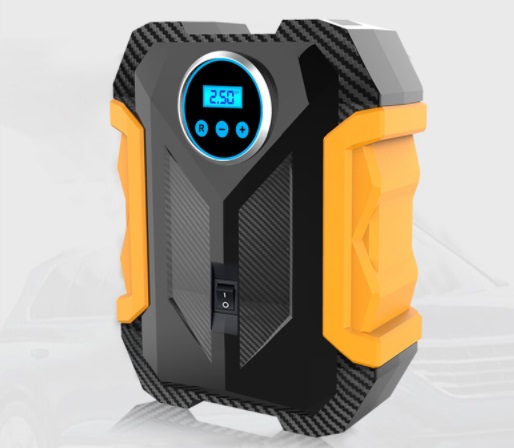 Weighing just 2.4 pounds, this pump has a total of 120 watts of power.
Weighing just 2.4 pounds, this pump has a total of 120 watts of power.
$35 at Amazon
Amazon
This AstroAI inflator has a powerful motor that inflates 30% faster than comparable inflators. It has a fast-charging battery with enough power to top off three sets of tires. It comes with a metal cylinder, tire pressure measurement, auto shut-off, an LED flashlight, fast inflation, dual power supply and real-time monitoring.
$66 at Amazon
Amazon
This inflator comes with AC and DC chargers, so you can use it with your car or at home. With three different nozzle heads, you can use it to inflate car tires, bicycles, basketballs and more.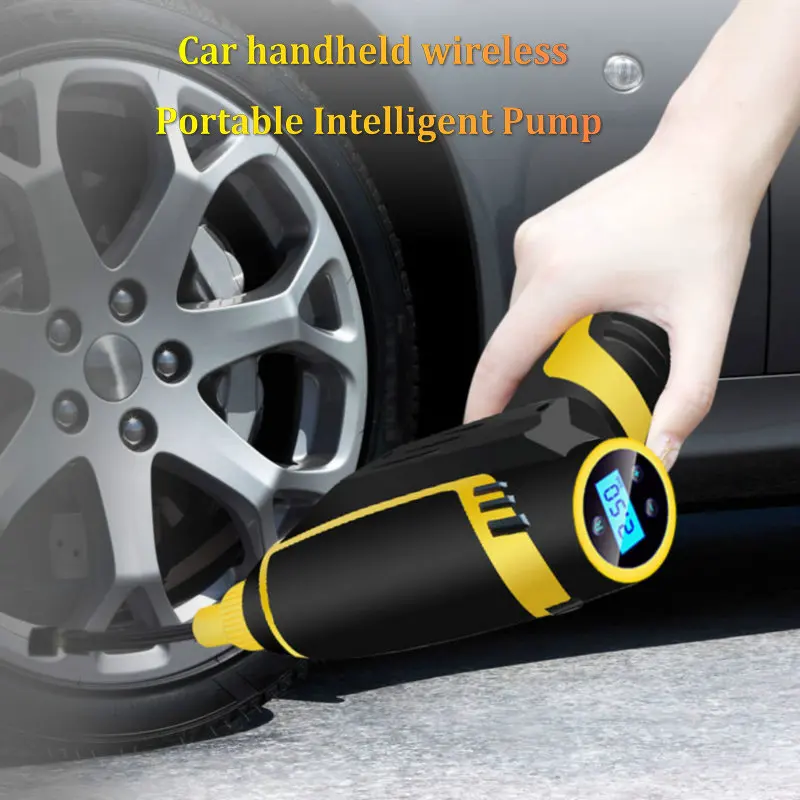 It has an analog pressure gauge, which some people may prefer over digital gauges.
It has an analog pressure gauge, which some people may prefer over digital gauges.
$70 at Amazon
Amazon
Weighing at just 3.2 pounds, this tire inflator packs a punch and comes in a small package. It's built with a steel valve, a digital display and AC/DC plugs. It has an easy carrying handle and an emergency LED light, and it shuts off automatically. This inflator comes with a three-year warranty. The price is now just $40, a drop from the $70 it was first at a few months ago.
$40 at Amazon
Amazon
With 20 volts of battery power and a 12-volt car power adapter, this portable tire inflator and air compressor was originally $90, but is now just $66. With auto shut-off, all you have to do is preset your desired pressure level and start the inflator. It will detect how much pressure is in your tire and automatically turn off when your tire is inflated.
With auto shut-off, all you have to do is preset your desired pressure level and start the inflator. It will detect how much pressure is in your tire and automatically turn off when your tire is inflated.
$66 at Amazon
Amazon
This machine isn't just a tire inflator. It's also a power source, a jump starter, a radio and a flashlight. It provides AC power and is equipped with a battery made for jump-starting your vehicle. The 26-psi air compressor will inflate tires on cars, trucks, SUVs, motorcycles, bicycles and even lawn mowers with ease.
Amazon
This rugged, high-performance air compressor offers an LCD display screen, multiple nozzles and an auto-measure tire pressure for fast and efficient inflation.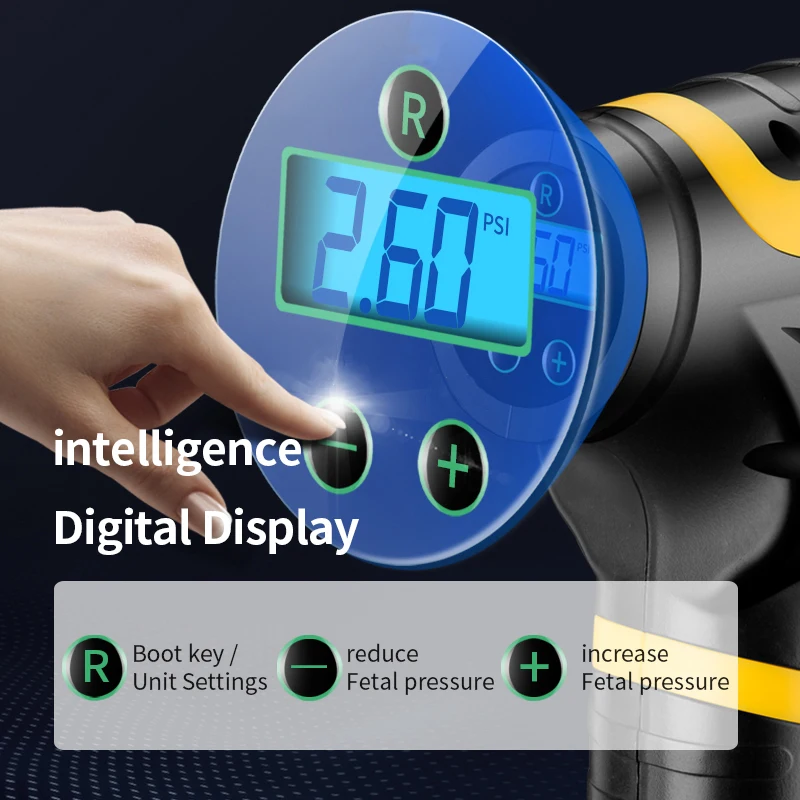 Weighing just 2.2 pounds, this inflator is also ultraportable. It also comes with a three-year warranty.
Weighing just 2.2 pounds, this inflator is also ultraportable. It also comes with a three-year warranty.
$33 at Amazon
A significant part of drivers believe that an inflated wheel differs from an uninflated one in terms of the car's perceived pull to the side, or the lack of contact with the road surface by the disk. Also, a very effective diagnostic method for many motorists is considered to be a sequential blow with the right, and occasionally with the left, foot on each wheel. Those who disagree with these diagnostic methods may find something interesting for themselves further.
Let me start by saying that I also disagree. No, of course, if the car on the road suddenly “led” to the side, you need to stop and try to figure out the reasons, of which there may be several. But today I want to touch on tire pressure.
In theory, we all know that under normal operating conditions, tire pressure should be as specified by the car manufacturer, and it should be checked daily, or at least, if there are no obvious problems, weekly.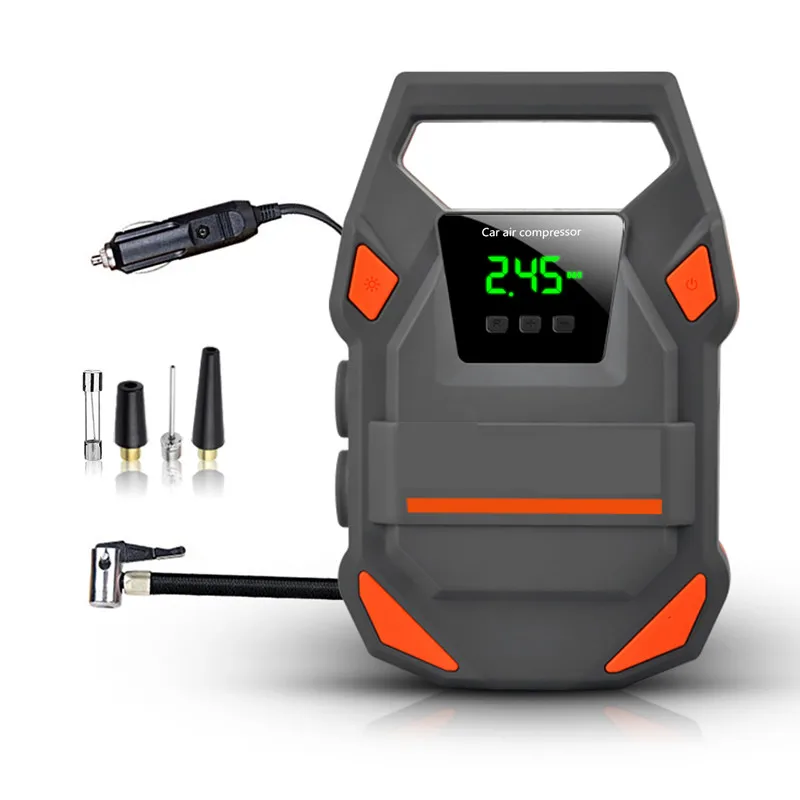 However, even if there is a pressure gauge in the bordachka, we, and I am no exception, rarely check tire pressure. I am also extremely lazy, and have been driving with a Chinese pressure monitor for 2 years now.
However, even if there is a pressure gauge in the bordachka, we, and I am no exception, rarely check tire pressure. I am also extremely lazy, and have been driving with a Chinese pressure monitor for 2 years now.
Additional information
This device, or, as local skeptics will say, a display meter, allows you to control tire pressure with a discreteness (I deliberately do not write “error”) of 0.1 bar, which is quite enough. My opinion is that it is worth paying attention when the readings change by 0.2-0.3 bar in one of the wheels, i.e. synchronous change in pressure associated with heating is a normal phenomenon.
I pay special attention to cars with all-wheel drive, as in my case - in most cases, the pressure in the front (main drive) wheels is proposed to be 0.2 bar higher than the pressure in the rear. This, with normal tire wear, eliminates false operation of the center clutch.
This “stray” allows you to control the pressure on the go, but the wheels sometimes need to be pumped up, especially during the seasonal shift - I don’t like to visit a tire shop on peak days, and on all my cars I always had a second set of wheels that I rearranged and rearranged myself in my garage , and I drive them for balancing at a time convenient for me - in summer and winter - when there are no queues.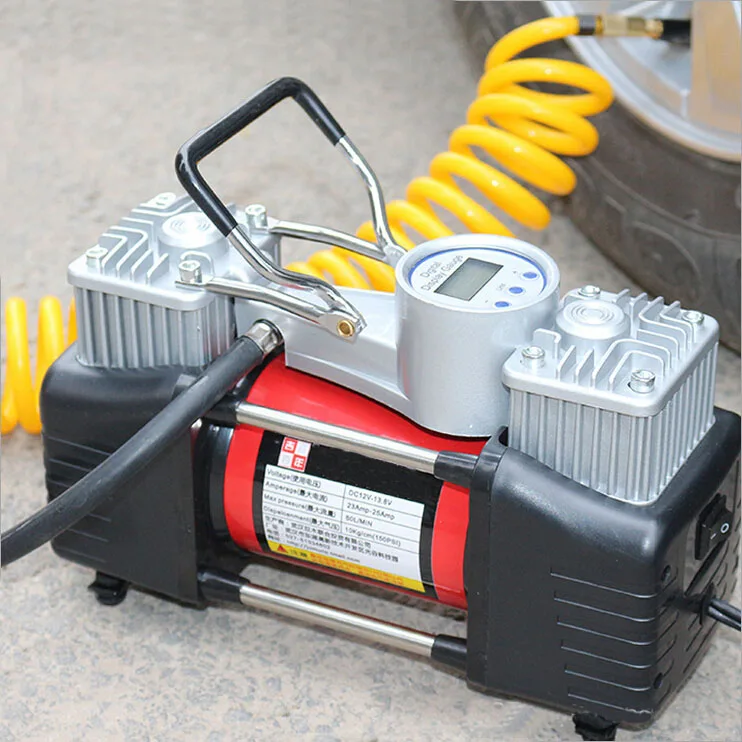
So what do I have. A self-made compressor based on 2 compressors from Soviet Zil refrigerators, which have long been scrapped, a receiver from a car of the same brand, and semi-homemade automation. This compressor has been living in unhygienic conditions for 12 years and has outlived 4 of my cars. They painted the garage door and a couple of car parts, a lot of things were blown and, of course, tires were inflated.
For this, before, I used various devices, and about five years ago I bought a gun designed for inflating tires.
And, everything would be fine, but the scale with a length of 12 bar and a division value of 0.2 bar, even with good eyesight, is not convenient (when measuring pressure in the region of 2 bar), and even more so with my farsightedness.
Additional information
Then I found and put in order a rusty old pressure gauge, putting it through an adapter
I checked (did not believe!) This pressure gauge according to the model, noticed an additive error of -0. 2 bar, and successfully used it for a couple of years.
2 bar, and successfully used it for a couple of years.
Last fall, having bought a new rolling jack, discounted in the CSN, I decided to modify the tire inflation gun by buying a new digital pressure gauge for it. When choosing a model, I was guided by considerations of a reasonable price - that is, I did not take the cheapest and most expensive ones, choosing between absolutely noname and marked ones, I preferred the latter, although I fully admit the same filling. Naturally, they will criticize me for this, but this will not greatly affect my opinion - for my money I buy what and where I want ...
The parcel went for a long time - almost 2 months, despite the fact that the Seller sent the goods by e-Packet, but the Russian Post, unfortunately, did not become Deutsche Post from this ... And finally I have a crumpled package
Additional information
Everything inside is intact
Standard weighing - what if the pressure gauge is so heavy that I can not lift the gun . ..
..
It passed... 121 grams, plus 2 elements of AAA format, I can lift... For now... Here they are inserted
We disassemble (within reason)
Additional information
Soldering is normal, there are almost no traces of flux. There is indeed a piece of solder on the plastic near the red power wire of the display backlight LED - almost on its contact gum, but it was easily removed without consequences - there is still some benefit from disassembly.
Turn on - everything works
The pressure gauge is activated either by a button or by a change in pressure. That is, if you install it, let's say on the receiver, then you can find out the pressure by pressing a button, and when measuring the pressure in the tire, you just need to fix the gun hose on the tire valve. If the pressure does not change, then after 15 seconds the backlight turns off, and after another 75 seconds the display turns off. 92 (kilogram force per square centimeter), Psi (Pound per square inch), KPa (kiloPascal),
We fasten the new pressure gauge to its workplace
And we check (we don’t believe!) It according to an exemplary “display meter”.
Additional information
This tire pressure gauge was chosen from 4 in the store to a friend who lent me all 4. exemplary manometer. The fact that the readings of all these meters can easily have an absolute error of the order of 0.1 bar does not scare me - the absolute value is important, but not as much as the difference in pressure in different wheels of a car.
We see that the readings of both meters are the same. They also match the readings in the first photo under the spoiler (rear wheel).
Conclusion - this pressure gauge suits me personally, although it would be possible to buy a similar one cheaper. Whether or not it is worth trying to accurately set and control tire pressure - everyone decides for himself - I will not argue on this topic, just as I do not argue with lovers of tinted windshields and lighting devices, plugs instead of seat belts, a simple replacement of halogen lamps with LEDs and music with a volume level of “chest pain”.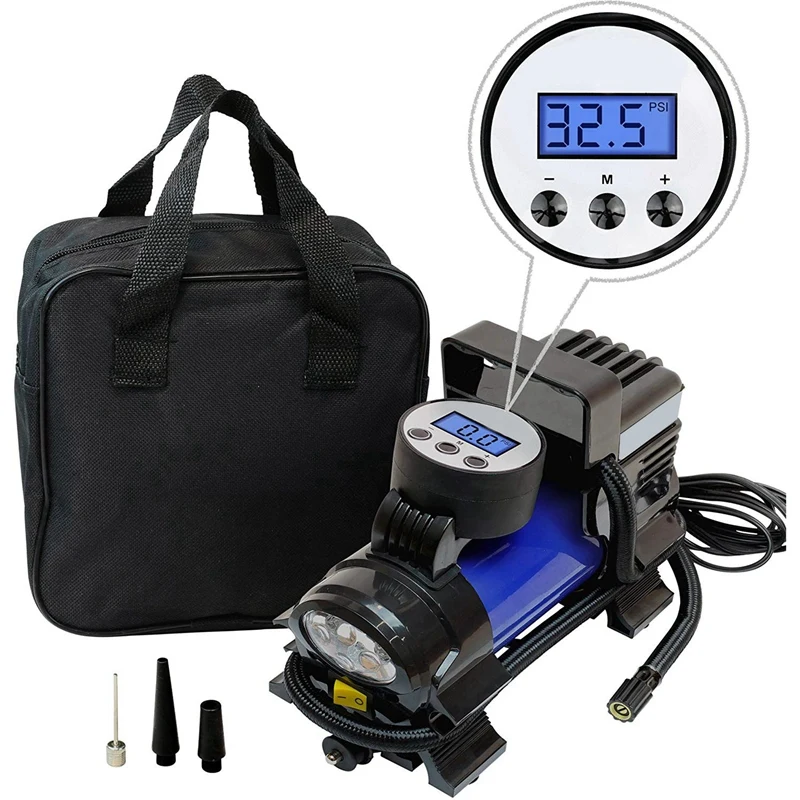
Good luck to everyone on our snowy and uncleaned (in my city) roads.
Happy Tatyana's day and the upcoming weekend everyone.
The air compressor is specially designed with full copper metal cylinder, just press the button to inflate, saving time and labor.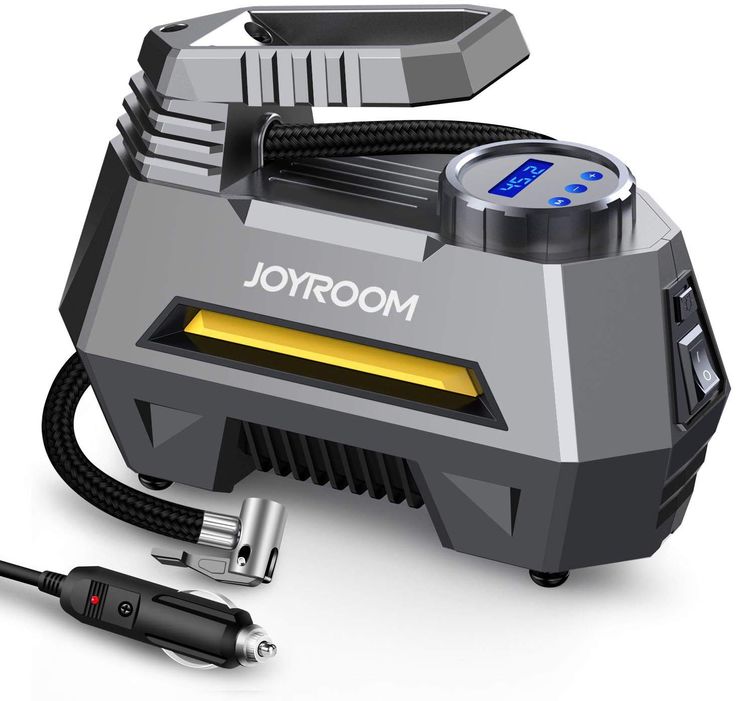 Digital LCD display for easy reading. As well as bright and durable LED lights, easy to use even in the dark. Both wireless and wired mode are supported.
Digital LCD display for easy reading. As well as bright and durable LED lights, easy to use even in the dark. Both wireless and wired mode are supported.
is in stock. The portable handle is convenient to take with you on a trip and use at any time.
Functions:
Wireless mode, direct inflation without the need to connect another power source.
Wired mode available, can be connected to the car with the included cigarette lighter.
Cigarette lighter with explosion-proof fuse provides surge protection.
Intelligent digital display for clear and direct reading, effectively prevent tire burst.
Extra large battery capacity ensures long battery life and high power output.
Full copper metal cylinder, good heat dissipation, low noise, less power consumption.
With flashlight function, works normally at night.
Humanized portable handle for easy carrying.
Includes attachments for sports balls, air mattresses, balloons and other inflatable boats.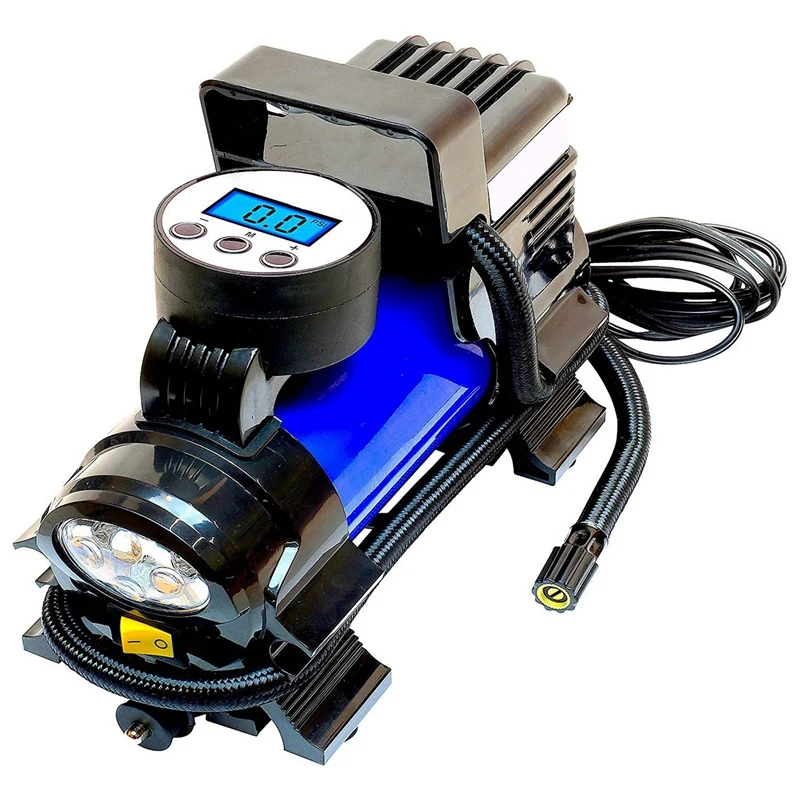
Features:
Material: ABS + copper.
Black color.
Voltage: DC 12V
Current: ≤10A
Battery capacity: 2000mAh * 3
Max pressure: 160psi
Product size: 153*104*104mm/6.0*4.1*4.1in
Product weight: 850g/1.9lb
Package size: 16*12 * 12cm / 6.3 * 4.7 * 4.7in
Package Weight: 905g / 2.0lb
Package List:
1 * Digital Air Compressor
1 * Charging Cable
3 * Nozzle Adapters
1 * replacement fuse
1 * valve extension
1 * cigarette lighter cable
1 * manual
Customer reviews
No reviews yet.
Share your thoughts with other customers and get Cafago points, the first 5 reviews get x2 Cafago points!
Write a review
Be the first to review this product
Best Products More
Learn more


